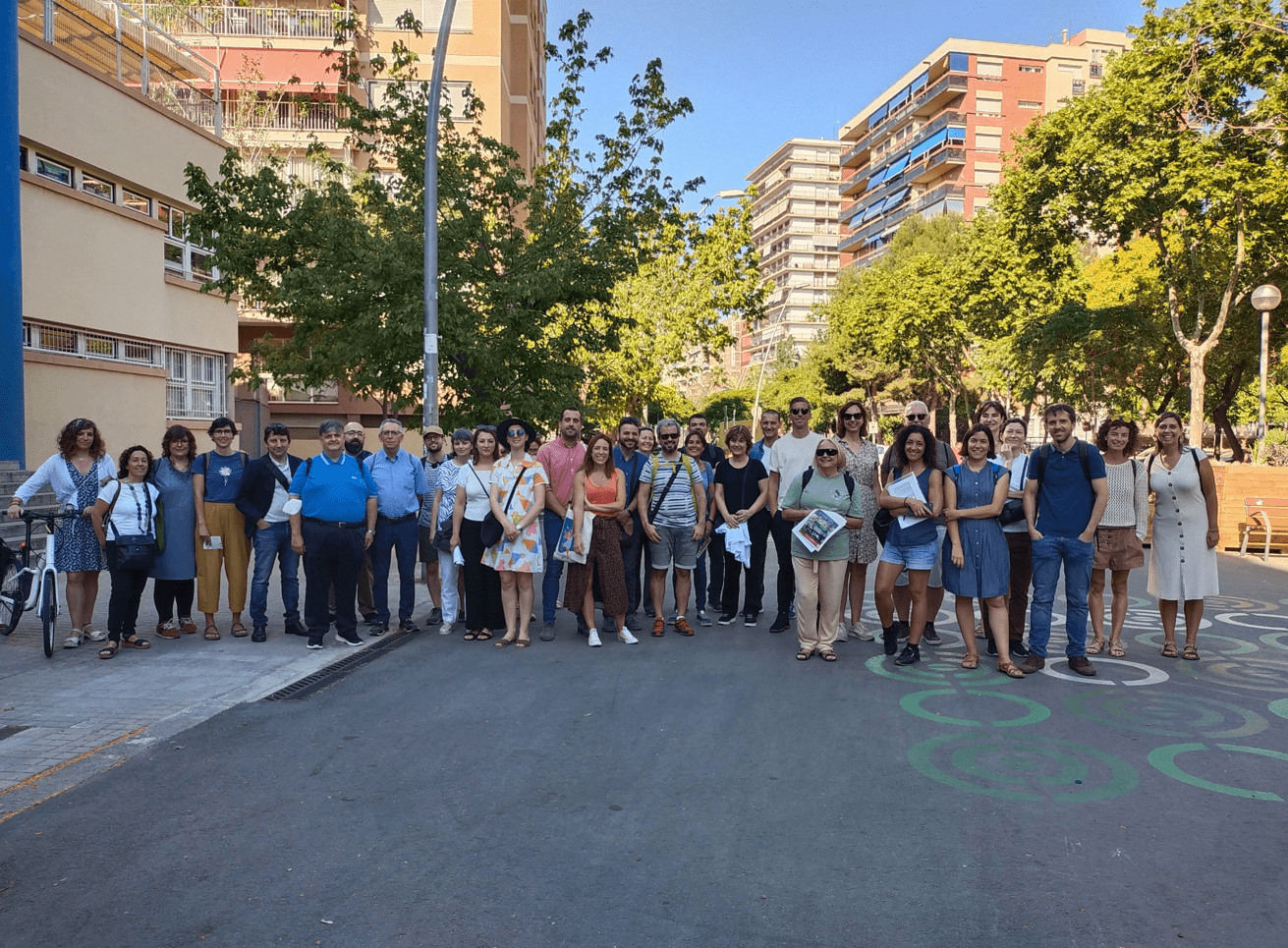
School Chance closure in Barcelona
The closure and the last School Chance’s face-to-face meeting took place in Barcelona on Thursday 9th and Friday 10th June 2022
SCHOOL CHANCE aims to explicitly incorporate children’ independent mobility into regional policies. Not only safe routes to schools, bike/walk to school campaigns and other unstructured mobility management initiatives: within SCHOOL CHANCE, partners will develop a comprehensive strategy for making sustainable mobility at school an essential element of their mobility policy and increasing sustainable mobility by changing the behavior of schoolchildren-and the next generation’s mindset towards sustainability.
School mobility is a hot topic: in a framework where transport-related CO2 emissions continue to increase, school traffic accounts for about a 15% of the total traffic at urban level. Researches in different EU countries show that kids driven to school by car range from 30 to 60% according to country and school grade.
SCHOOL CHANCE will focus on policies that support cleaner transport modes and promote alternative behaviours in children’ mobility to and from school, working to develop an integrated set of tools to incorporate school mobility strategies at regional level. The objective is to reduce carbon emissions by finding innovative and coordinated ways to systematically address the 4 most pressing challenges in the development and implementation of school mobility policies: information, education, promotion, infrastructure. Partners will work together and learn from each others how to encourage safe, healthy, autonomous and sustainable travel to school. It will be done by:
€1,842,585.00
Low-carbon economy
The objective 4.5.1. of this policy instrument (PI) is promotion of sustainable urban mobility: clean urban transport, public transport, urban-rural connection, improve road network, cycling transport, pedestrians, electric mobility and development of clean energy supply systems.
The ROP states that actions that may be financed by this PI have to meet the requirements:
1) aim to reduce greenhouse gases, with an impact that can be measured;
2) be part of a strategy or SUMP;
3) be carried out in cities and urban functional areas.
The ROP lists 12 actions that may be carried out within this PI (similar actions can also be included). Some actions of the list are: The private transport optimization, improving their level of employment and the rational use of vehicles, Promoting cycling, Promoting public and clean urban transport, Improve ITC mobility management.
School mobility is not specifically defined within the actions listed by the ROP. Cities know that school mobility has now and in the long term a great impact on sustainable urban mobility.
Catalonia has 1,27 millions students aged 3 - 16. A policy addressed to school mobility will influence not only these children but their families and teachers.
It is important to influence mobility behaviour at a young age. Once kids are used to a sustainable way of travelling, they are likely to keep this behaviour as adults. Moreover, parents a likely to change their mobility patterns when they are education their children.
1. The increase of sustainable mobility represents an important objective at regional level. ROP ERDF Investment Priority 4e, Objective 4.6 “Increase of sustainable mobility in urban areas” identifies measures aimed to decrease the use of private motorised vehicles and favour the integration of different means of transport, such as:
• improvements of public transport
• creation of pedestrian areas and cycle paths
• improvement of ICT
2. Currently, not all aspects of sustainable mobility are included in the ROP of Emilia-Romagna Region: school mobility is not specifically mentioned, while mobility to and from school has a strong impact on the environment, the use of public spaces, and the autonomous growth of the new generations.
Reducing the carbon footprint of school transport and integrating school mobility in the general mobility planning at urban and regional level mean not just act on a significant part of the traffic but is also a key to power up the cultural and behavioural change consistent with the European 2020 Strategy towards a more sustainable future. Emilia-Romagna Region is very active in promoting SUMP adoption among the cities of the Region: by 2020, all the main cities of the region committed to adopt a SUMP. Within SCHOOL CHANCE, Reggio Emilia aims to incorporate school mobility into the SUMP; through this, school mobility will be recognised at regional level, enhancing the policy instrument and strengthening its effect on reduction of carbon emission.
Utrecht is the fastest growing city in The Netherlands and the region of Utrecht is considered to be the most competitive region of Europe. To remain competitive while growing, the city and the regional partners have installed several mobility management policies.
The ERDF Operational Programme-West NL ‘Kansen voor West’ aims at creating a low carbon economy, a.o. by stimulating sustainable mobility. In the ERDF OP-West NL (Opportunities for West), 20% of the budget is labelled for Low Carbon Economy projects. It is also a priority in our cities ITI.
Home to school mobility in the Netherlands is increasingly done by car (30% of trips).
When addressing schools, children and parents, Utrecht is confronted with challenges. Measures need to connect more with the needs of schools, have more reciprocity and a clear ‘what’s in it for me’ for the schools. Also, addressing children as adults of the future, asks for a long term approach, but there is no clear insight in effects on long term. And since parents often bring their children to school as part of a trip to e.g. work, we need to find better connections with the work trips.
School mobility measures in Utrecht aim for a modal shift from car to bike and walking, both with the parents as with the pupils as adults of the future. It therefore facilitates the move to more sustainable, low-carbon alternatives for transport and mobility, by promoting alternative mobility behavior.
1) The traffic strategy has followed SUMP national guidelines (TRAST) and it is is one of the main strategies for carbon reduction in the city of Gävle. Key objectives and strategies are focused on urban form (density should increase etc), the transportation system (lenght of networks etc), the traffic volume (more short travels with bike instead of car etc), accessibility (for pedestrians etc), security, environment, road safety. The traffic strategy has set 22 goals with connected indicators.
The strategy has been developed into an action programme. One of the specified goals is to “Create a safe traffic environment around schools”, identifying some measure that could be implemented such as:
• school travel plans
• traffic education
• walking school buses
• zones for dropping off children driven by car.
The responsible political organs is the board of Education, board of Environment (Samhällsbyggnad) and Gavlefastigheter.
2) No concrete action on school mobility has yet been realised. A more concrete action plan is needed to pursue the objectives of the policy instrument. We need to ensure necessary cooperation between different organisations and actors within the municipality, and that the right measures are conducted in the right time with necessary competence involved. SCHOOL CHANCE will help us to identify, analyse and transfer good practices of other European regions and cities in order to include specifically school mobility in policy and action plans.
Since April 2012 a transport operational programme "Mobile Gdansk” has been included into the official Development Strategy of the City. The document was later turned into the “Gdansk 2030+ City Development Strategy”. It gives clear priority to bicycles, walking, public transport and investments aiming at the sustainable urban development and promoting low carbon emission strategies for all kind of territories, in particular for urban areas.
The strategy underlines that urban mobility should make possible the economic development of the city, increase the quality of life of its inhabitants and provide better protection of the environment. The city is struggling to reduce congestion, and therefore alternatives to private car use, such as walking, cycling and collective transport, should be made more attractive and safe.
However the Strategy underlines the goals of creating an efficient, safe and sustainable transport system based on public transport and active mobility, putting improvement of the residents’ health and well-being due to lower pollution, lower noise and a healthier lifestyle, greater environmental awareness and sensitivity among the residents as its main objectives, there is no school mobility specifically mentioned.
Mobility to and from school has a strong impact on the better environmental quality due to lower pollution emissions, the limiting of transport noise and the autonomous growth of the new generations.
The 2014-2020 Regional Operational Programme (ROP) is the main policy dedicated to regional development in Romania. The ROP is focused on providing opportunities for R&D development, SME competitiveness, lowering energy consumption (especially in public buildings) and carbon emissions, improving urban mobility. The most important priority is supporting the transition towards a low carbon economy (with 29.9% of the funding earmarked for projects) followed by sustainable urban development of cities (with 17.59% earmarked for projects). Both these axes include lowering CO2 emissions as an important sector that could be improved in major way.
The ROP’s approach to urban mobility is focused on improving the quality of the rolling stock in public transport and generally supporting active travel modes. However, school mobility is not the focus of the programme even though it is one of the main issues affecting mobility in the cities, especially in historic areas where streets are usually narrow. School mobility is responsible for most of the traffic congestion in the AM peak hours in the city of Brasov. Brasov city alone has over 33000 home based education trips every morning. An intervention in this area will decrease the number of km driven by parents on their way to work, it will eliminate traffic congestion, especially in the historic area, it will increase the use of walking and cycling and most importantly will contribute to developing sustainable urban mobility behaviours.

The closure and the last School Chance’s face-to-face meeting took place in Barcelona on Thursday 9th and Friday 10th June 2022
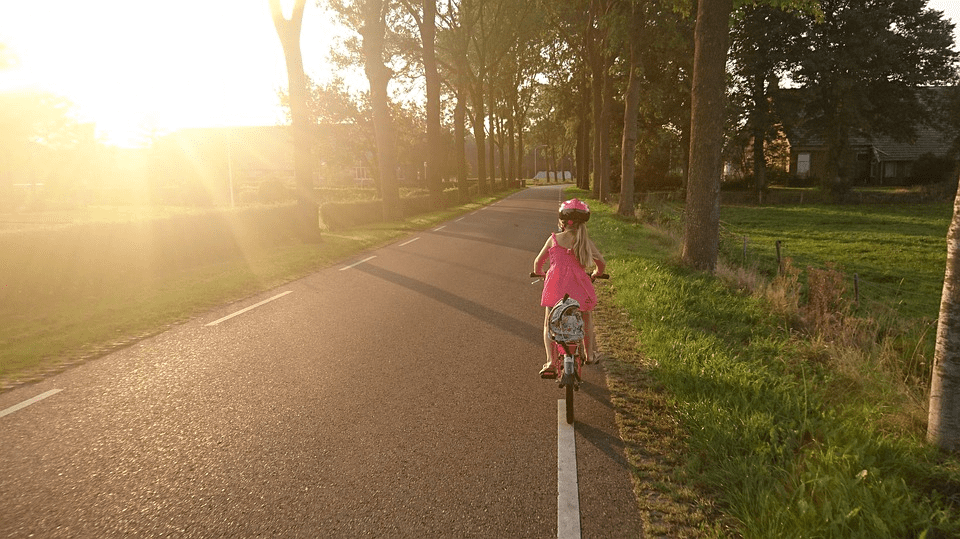
Second Transfer Webinar of School Chance project
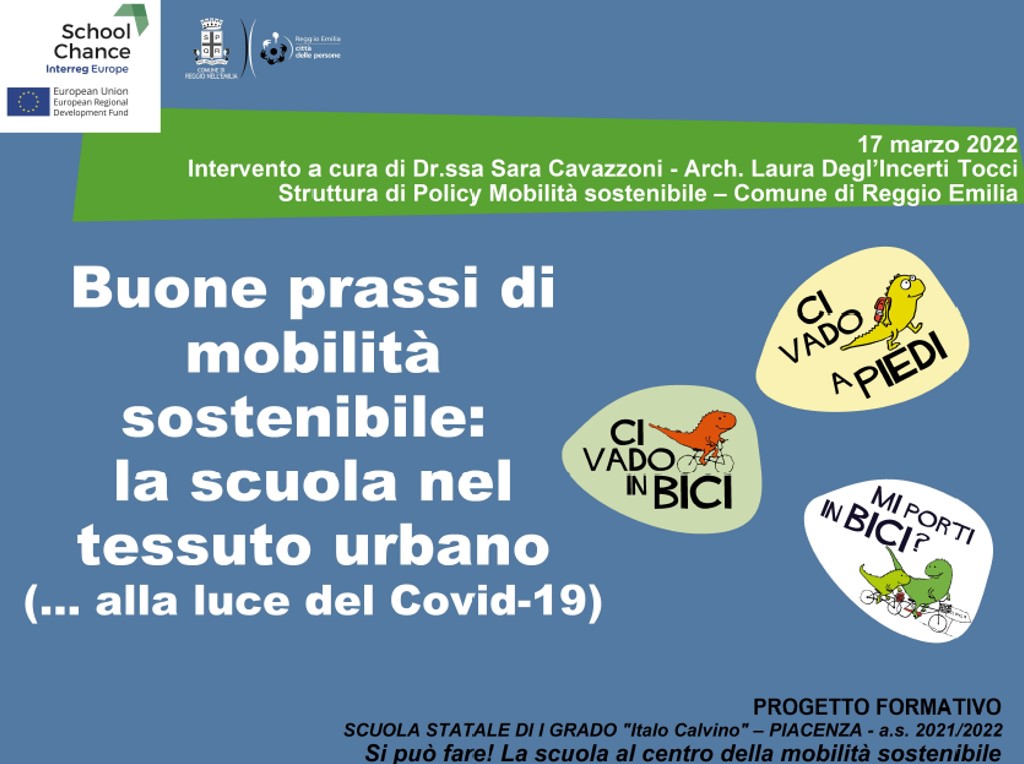
Training Course in Piacenza (IT) – School Chance project

Additional Year of the School Chance project!
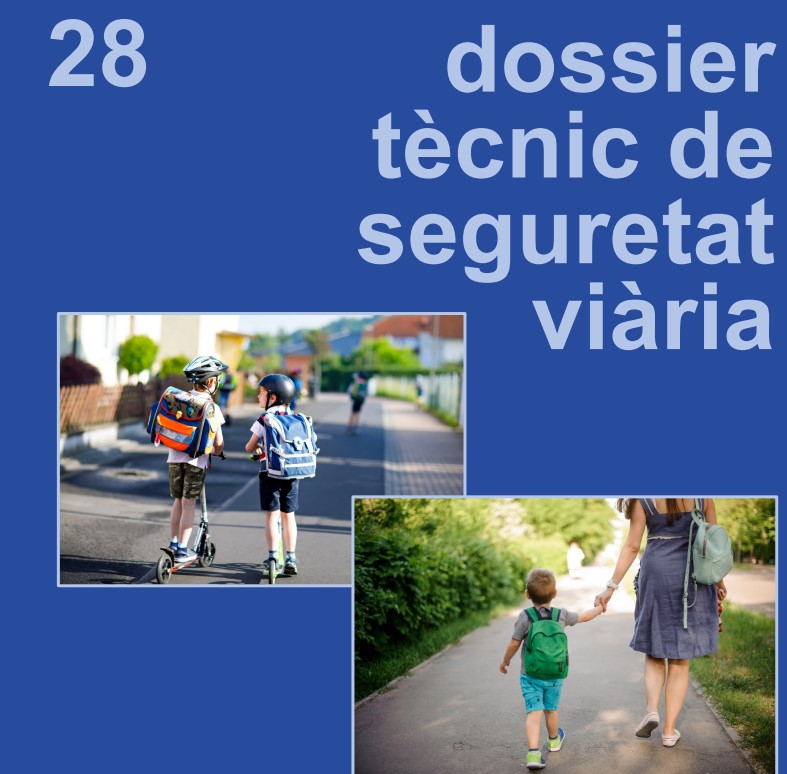
Report Design of safe routes to school: Going to school in a healthy, sustainable and safe way”
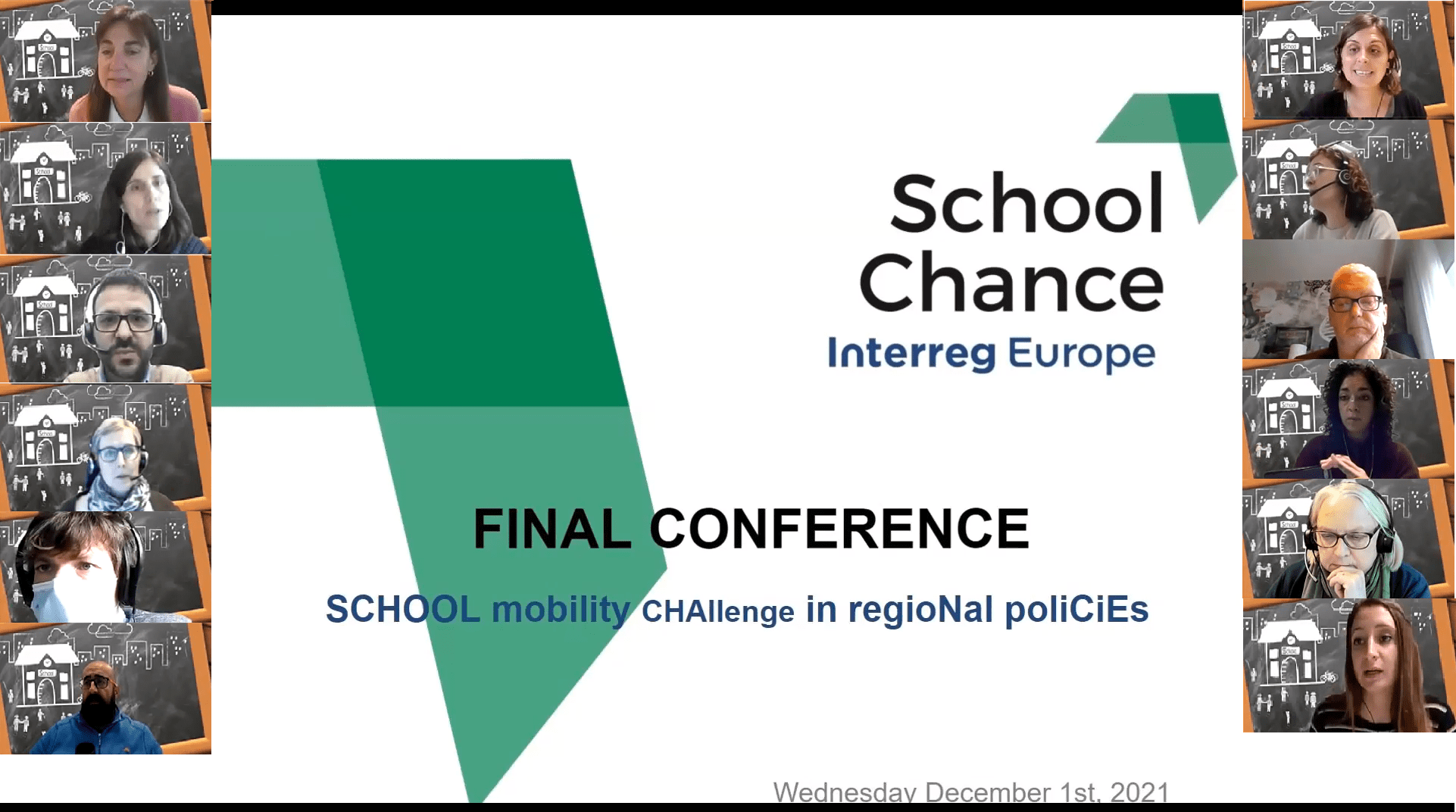
School Chance Final Conference
“Good practices in sustainable school mobility in six European regions”
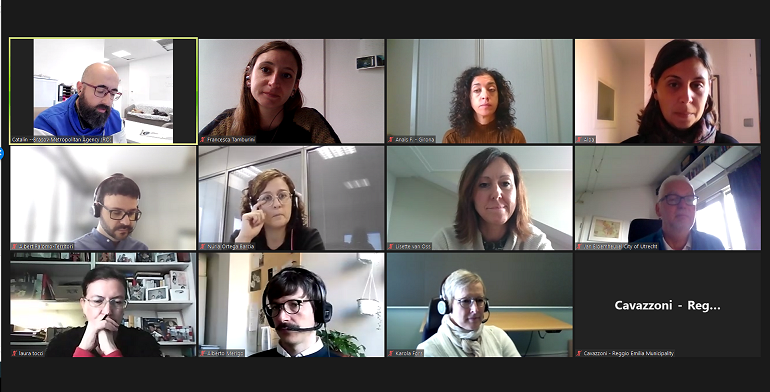
8th project management meeting to share the results of School Chance project and launch the one-year extension
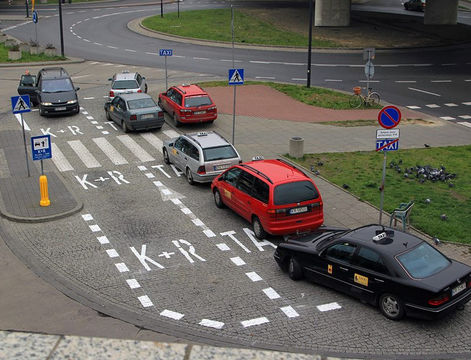
Updates about the implementation of Gdańsk Action Plan
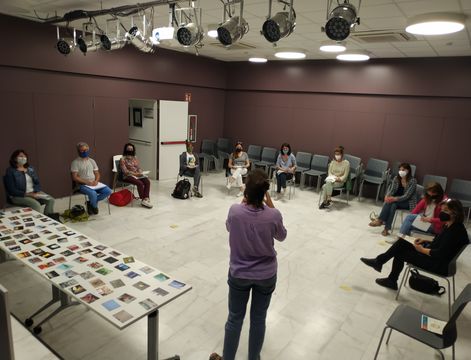
Public closure event of the School Mobility Manager Local Network Pilot Action held in Girona on 2 June.
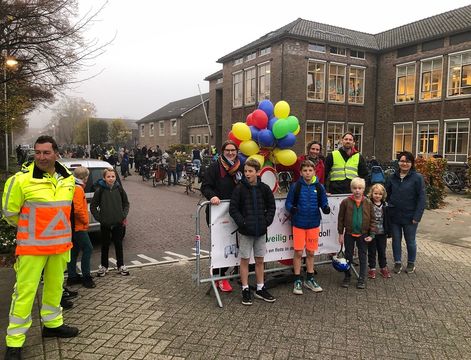
Updates about the implementation of Utrecht Action Plan